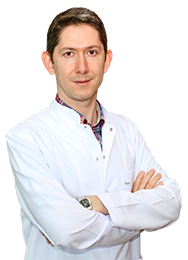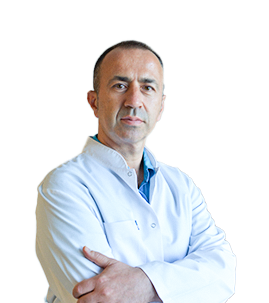EYE DISEASES

Eye health is of great importance in terms of quality of life. Eye diseases are diseases that cause deterioration or complete loss of vision due to environmental, genetic or age-related factors. These disorders that may occur in the eyes, which are among the most important and sensitive sensory organs of the body, can affect the patient's life in an extremely negative way. While some eye diseases do not cause any symptoms in their early stages, most eye diseases can manifest themselves with one or more of the following problems: severe burning and itching sensation, decreased or narrowed vision, inability to select colours, excessive burring, discomfort from light. Regular medical check-ups are among the first measures that can be taken to prevent eye diseases. Many eye diseases can be treated in individuals who have regular check-ups and start to receive the necessary treatment when the disease is in the early stages thanks to early diagnosis.
Cataract
Cataract is an eye disease that occurs when the lens of the eye loses its natural transparency and hardens, which can lead to loss of vision if left untreated. Although cataracts are mostly seen in middle-aged and older individuals due to advanced age, toxic substances, radiation, high-voltage electricity, genetic disorders and some drugs containing cortisone can also cause cataracts regardless of age. The only treatment for the disease, which manifests itself with symptoms such as sensitivity to light, decreased night vision and faded colours, is to remove the lens of the eye that has lost its function and replace it with a new lens. Phacoemulsification surgery is performed in 20-30 minutes and the patient can regain a healthy vision from the first day.
Diabetic Retinopathy
Diabetic retinopathy is a disease caused by the deterioration of the capillary vascular structures in the retinal layers of the eyes, mostly as a result of diabetes mellitus lasting more than five years. Diabetic retinopathy, which is one of the leading causes of curable blindness in the world, usually does not show any symptoms in its early stages. In order to prevent the progression of the disease at an early stage, diabetic patients should have detailed ophthalmological examinations at least once a year.
Glaucoma
Glaucoma, or eye pressure, is a disease that occurs as a result of high intraocular pressure damaging the optic nerves and may cause vision loss in the later stages. The absence of any symptoms or signs in the early stages in the majority of patients makes it difficult to detect glaucoma. Family history of glaucoma, diabetes or goitre diseases in advanced ages, long-term cortisone use, eye inflammations, myopia and migraine are factors that increase the risk of glaucoma. It is extremely important for individuals in these risk groups to have regular eye examinations and have their intraocular pressure measured regularly in order to take early precautions against the disease. Since glaucoma causes damage to the nerve cells of the eye that cannot regenerate itself, the disease cannot be completely cured; the treatment process is carried out with the aim of keeping the disease under control and preventing the loss of vision. In the treatment of glaucoma, eye drops that reduce intraocular pressure are used daily and surgery or laser operation can be applied depending on the type of glaucoma.
Strabismus
Strabismus is a disease that occurs as a result of disruption of eye synchrony due to incompatibility or deficiency in the muscles that provide parallelism between the eyes, and manifests itself continuously or from time to time. In the treatment of strabismus, where early diagnosis is extremely important, many different methods are used depending on the age of the patient and the condition of the disease. After a detailed eye examination, strabismus can be eliminated by using special glasses, computer-aided eye exercises or a surgical operation.
Tear Duct Obstruction
Tear duct obstruction is a disease that occurs when tears, which are extremely necessary for cleansing the eyes and a healthy sense of vision, cannot reach the nasal cavity through the tear duct. The disease, in which early diagnosis is very important, manifests itself with symptoms such as excessive watering of the eyes, frequent burrs and swelling at the root of the nose. While the treatment of tear duct obstruction is provided by regular massages on the tear sac in the root of the nose in infants, probing, surgical intervention (DSR), or laser treatment is applied in adults depending on the condition of the disease and the individual.
Blepharoplasty
Blepharoplasty, also known as eyelid aesthetics, is the surgical correction of sagging skin and muscle tissue on the eyelids due to aging of the skin. Blepharoplasty is mostly






